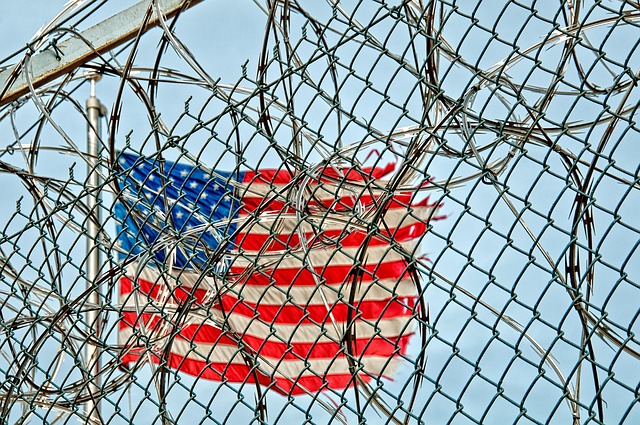DUI laws face challenges due to loopholes in legislation, creating regional inconsistencies that offenders can exploit. These gaps, highlighted by differing BAC limits and ride-sharing app influences, pose risks, especially for young drivers. Despite stricter state laws, lenient sentences in some areas encourage risky behavior. To prevent early DUI among youth, it's crucial to identify and address these loopholes in DUI legislation through collaboration between advocates and policymakers. Comprehensive strategies include educational campaigns, stricter enforcement, community engagement, and targeted interventions to raise awareness and promote responsible driving behaviors.
In the ongoing battle against drunk driving, youth prevention is a critical front. Despite advancements in DUI laws, loopholes in legislation continue to pose a significant threat, especially among young drivers. This article delves into the current state of DUI laws and highlights common exclusions, offering insights into strategies for effective prevention programs. We explore the role of community engagement as a vital key to success, addressing loopholes in legislation that have long plagued our roads.
- Understanding DUI Laws and Their Current State
- Loopholes in Legislation: The Young Driver Threat
- Identifying and Addressing Common Exclusions
- Strategies for Effective Prevention Programs
- Community Engagement: A Key to Success
Understanding DUI Laws and Their Current State

DUI (Driving Under the Influence) laws are designed to protect public safety by preventing individuals from operating vehicles while impaired. However, despite their importance, these laws often face challenges due to loopholes in legislation. Current DUI regulations vary across jurisdictions, leading to inconsistencies in enforcement and potential gaps that allow offenders to exploit legal ambiguities.
The evolving nature of society and technology has made it necessary to regularly update DUI legislation. For instance, with the rise of ride-sharing apps, laws must address how to hold accountable drivers who accept ridesharing jobs while under the influence. Additionally, loopholes may arise from differing blood alcohol concentration (BAC) limits for commercial vs. non-commercial drivers or variations in legal consequences for first-time offenses compared to subsequent infractions. Understanding and patching these gaps in DUI Legislation is crucial to ensuring effective prevention and deterrence strategies for early intervention with at-risk youth.
Loopholes in Legislation: The Young Driver Threat

Despite progress in DUI (drunk driving under influence) legislation, loopholes continue to pose a significant threat, especially when it comes to young drivers. Many states have implemented strict laws targeting repeat offenders and lowering legal blood alcohol limits, yet existing gaps allow for potential abuse and evasion. For instance, some jurisdictions offer lenient sentences or alternative programs for first-time offenders, potentially encouraging risky behavior among adolescents who might not fully comprehend the consequences.
Young drivers, due to their relative inexperience, are often seen as a vulnerable group. Loopholes that exclude them from enhanced penalties or allow for early diversion programs may seem well-intentioned, but they can ultimately contribute to higher rates of repeat offenses. Addressing these legislative shortfalls is crucial to ensuring that young people fully grasp the seriousness of DUI and understand the potential lifelong consequences of such decisions.
Identifying and Addressing Common Exclusions

Many youth prevention programs aimed at stopping early DUI often face challenges due to loopholes in DUI legislation that can obscure their effectiveness. These legal gaps can include exceptions or variations in laws across different regions, which can create a patchwork of regulations that are easier for individuals to exploit. For instance, some states might have lower drinking ages or more lenient penalties for first-time offenders, encouraging young people to engage in risky behavior under the assumption they won’t face severe consequences.
Identifying and addressing these loopholes is crucial to enhancing youth prevention efforts. By collaborating with policymakers, advocates can push for more uniform and stringent DUI laws that close these gaps. This involves educating lawmakers about the unique risks associated with underage drinking and driving, as well as sharing successful strategies from existing programs. Such actions are essential in creating a cohesive legal framework that deters young people from engaging in DUI activities and ensures consistent consequences across jurisdictions.
Strategies for Effective Prevention Programs

Prevention programs aimed at stopping early DUI (Drunk Driving Under Influence) among youths need to be multifaceted and robust to effectively address emerging trends and loopholes in DUI legislation. One key strategy is education and awareness campaigns that go beyond the traditional ‘Don’t Drink and Drive’ messages, focusing on the consequences of impaired driving and targeting high-risk groups, such as young adults and teenagers. These programs can leverage social media platforms and peer influence to reach a wider audience and dispel myths about alcohol consumption and driving.
Additionally, strengthening DUI laws and closing loopholes is crucial. This involves stricter enforcement, harsher penalties, and innovative measures like mandating ignition interlocks for repeat offenders or implementing zero-tolerance policies for young drivers. Community engagement, including parental involvement and school-based programs, can also play a significant role in shaping responsible driving behaviors among youth by fostering a culture of accountability and safety.
Community Engagement: A Key to Success

Community engagement plays a pivotal role in combating early DUI (drunk driving under age) incidents. By fostering strong connections within the community, we can identify and address potential loopholes in DUI legislation that often go unnoticed. Active participation from local residents, schools, and law enforcement agencies is essential to creating an environment where youth are educated, empowered, and accountable. Through collaborative efforts, we can develop targeted interventions and awareness campaigns that resonate with young people, teaching them about the risks and consequences of impaired driving.
Engaging communities allows for a more nuanced understanding of cultural norms and social influences that contribute to risky behaviors. By involving peer leaders, community mentors, and local organizations, we can create a supportive network that discourages underage drinking and promotes safe alternatives. This collective approach not only prevents early DUI but also fosters a sense of responsibility and civic engagement among youth, ensuring a safer future for everyone.
The fight against Early DUI involves addressing loopholes in DUI legislation, especially as they concern young drivers. By identifying and closing these gaps, we can strengthen prevention programs and engage communities to foster safer driving habits. Implementing targeted strategies and promoting community involvement are crucial steps towards reducing underage drinking and driving, ultimately saving lives and creating a safer future for all.






